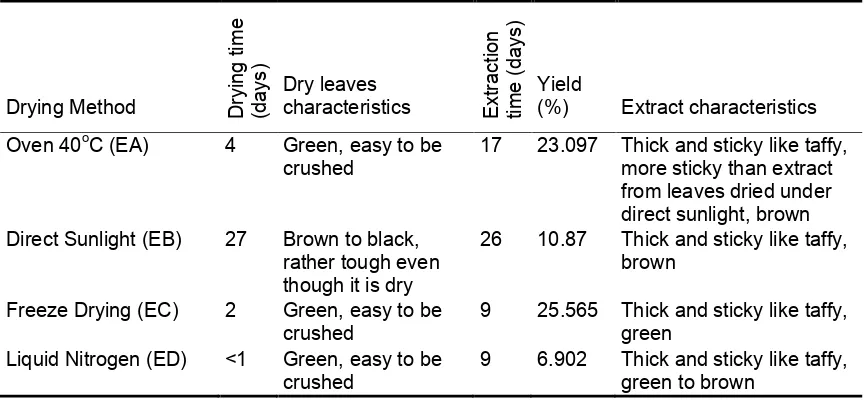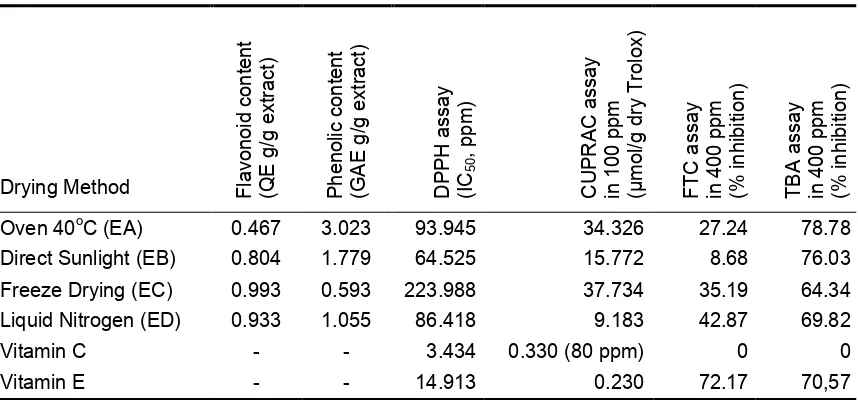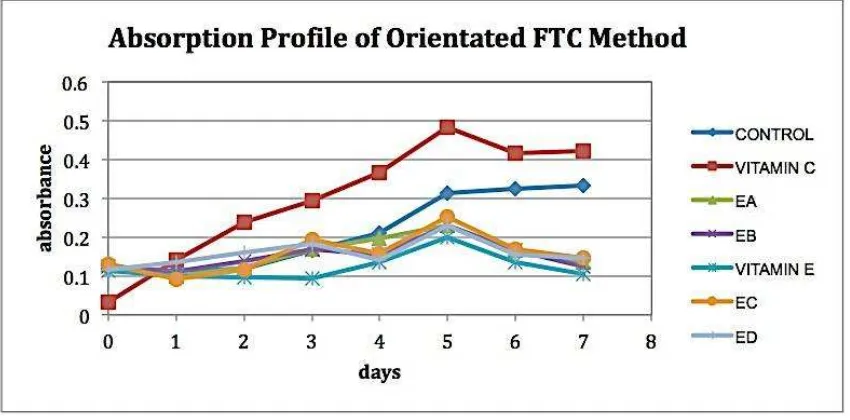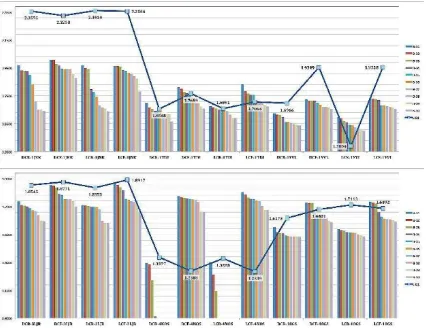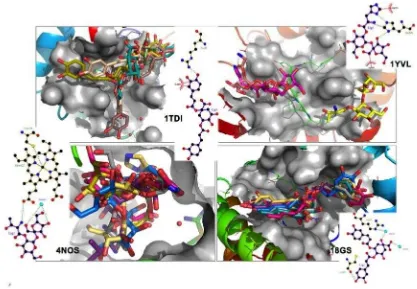Surat Keterangan
Pengalihan Ijin Publikasi Mandiri
Kami, panitia pelaksana kegiatan International Symposium on Medicinal Plant and Traditional Medicine “Indonesia Traditional Medicine for Human Welfare”, memberikan ijin Pengalihan Publikasi Mandiri secara online artikel dari:
Nama Penulis : Hidayah Annisa Fitri, Titis Rahayu, Broto Santoso, Andi Suhendi Asal Institusi : Fakultas Farmasi Universitas Muhammadiyah Surakarta
Judul Artikel : Purple Sweet Potato Leaves: Antioxidant Activity by DPPH, CUPRAC,FTC, TBA methods and Molecular Docking Profile using Dock6
untuk dipublikasi secara Mandiri oleh yang bersangkutan. Artikel tersebut telah dipresentasikan secara oral dalam International Symposium on Medicinal Plant and Traditional Medicine “Indonesia Traditional Medicine for Human Welfare” yang diselenggarakan oleh Medicinal Plant and Traditional Medicine Research and Development Centre (MPTMRDC/B2P2TOOT) - NIHRD, Ministry of Health Republic of Indonesia in colaboration with National Working Group of Indonesian Medicinal Plant (POKJANASTOI)pada tanggal 4-6 Juni 2014 di Auditorium of Medicinal Plant and Traditional Medicine Research and Development Center (MPTMRDC/B2P2TOOT) Tawangmangu. Demikian surat ini dibuat agar dapat dipergunakan sebagaimananya mestinya.
Tawangmangu, 27 Februari 2015 Panitia Pelaksana
Purple Sweet Potato Leaves: Antioxidant Activity by DPPH, CUPRAC,
FTC, TBA methods and Molecular Docking Profile using Dock6
Hidayah Annisa Fitri1, Titis Rahayu1, Broto Santoso1*, Andi Suhendi1
1Faculty of Pharmacy, Universitas Muhammadiyah Surakarta *Corresponding author, email: Broto.Santoso@ums.ac.id
Abstract
Purple sweet potato leaves is one of crop plants that has natural antioxidants potency because it contains phenolic and flavonoid compounds. The aim of this experiment was to determine the effect of leaf drying method using direct sunlight at room temperature, by oven, freeze-drying, and liquid nitrogen to the antioxidant activity of the ethanol extract and its molecular docking profile. The antioxidant activity of the four types of extracts was measured using DPPH, CUPRAC, FTC and TBA. All chemical compounds contained in plant was obtained from Universal Natural Product Database (UNPD) and performed molecular docking using Dock 6. The experimental results showed that the differences in leaf drying methods affected the total phenolic and flavonoid content of the ethanol extract. The measurement of antioxidant activity of extracts which measured by four different methods also showed varying results profile. It can be concluded that the differences in the method of drying, the type of oxidant generated in the antioxidant measurement method and the treatment for each antioxidant measurement methods of had significant impact on its antioxidant activity. The top ten of docked molecules demonstrated that they had strong binding affinity with protein 1TDI, 1YVL, 4NOS and 18GS compared to their native ligands. This proves that the content of phenolic and flavonoid compounds from purple sweet potato does have antioxidant activity through multiple lines of mechanisms of action that need to be confirmed in further laboratory testing.
Keywords: Purple Sweet Potato, DPPH, CUPRAC, FTC, TBA, Dock6, Molecular Docking
INTRODUCTION
Purple sweet potato leaves (Ipomoea batatas L.) has been widely used as food
source in Indonesia. Based on research by Islam (2006), purple sweet potato leaves
had higher polyphenol compounds than other vegetables such as spinach, broccoli,
cabbage and lettuce. Islam et al. (2002) have been successfully identified polyphenol
compounds in the purple sweet potato leaves. The polyphenol compounds are
anthocyanin and phenolic acid. Anthocyanins are member of flavonoids group, while
the phenolic acid is member of phenolic group (Dai and Mumper, 2010). There are 15
types of its anthocyanins compounds, they are are cyanidine and acylated peonidine
glycoside. The phenolic acid consists of kaffeic acid and 5 types of caffeoylquinate
derivatives, namely 3-mono-O-caffeoylquinic acid (chlorogenic acid, CHA),
3,4-di-O-caffeoylquinic acid (3,4-diCQA), 3,5-di-O-3,4-di-O-caffeoylquinic acid (3,5-diCQA),
4,5-di-O-caffeoylquinic acid (4,5-diCQA), and 3,4,5-tri-O-4,5-di-O-caffeoylquinic acid (3,4,5-triCQA)
numerous are 3,5-diCQA, 4,5-diCQA, chlorogenic acid, 3,4-diCQA, 3,4,5-triCQA,
caffeic acid (Islam et al., 2002).
Several studies have been investigated methanol, ethanol and water extract of
I. batatas leaves that grow in some countries such as Malaysia, America, and Croatia.
They showed that a total polyphenol compound in it has potent antioxidant activity (Hue
et al., 2012; Islam et al., 2009; Koncic et al, 2012). In clinical studies, consumption of I.
batatas L leaves has proven immune system and antibodies enhanced (Chen et al.,
2005), decreased lipid peroxidation and DNA damage (Chen et al., 2008), reduced the
risk of damage caused by oxidative reactions in the body and prevented the secretion
of inflammatory pre-cytokines (Chang et al., 2010).
There are several factors can affect the antioxidant potential of purple sweet
potato leaves. First is a drying method of leaves before they were extracted and tested.
In addition to the leaves drying by direct sunlight, there are various methods of drying
by using a tool or material that can improve the efficiency and effectiveness of the
drying process. Oven, freeze-drying and liquid nitrogen methods are other drying
technique, which have advantages over the method of drying by direct sunlight.
The aims of this study was to determine the antioxidant activity of the ethanol
extract of purple sweet potato leaves which dried by four different drying methods and
its molecular docking profile. They are direct sunlight at room temperature; using an
oven at 40oC; freeze drying and liquid nitrogen. The amount of antioxidant activity of
four type extracts was analysed by spectrophotometer with reagent of DPPH,
CUPRAC, FTC and TBA. CUPRAC and DPPH method used to determine the
antioxidant activity of samples against reactive oxidant of DPPH and form CUPRAC
complex compound, while the FTC and TBA method used to determine antioxidant
activity of the extracts against lipid peroxidation reaction. Molecular docking has been
accomplished using Dock 6.
MATERIAL AND METHODS
Molecular docking was carried out using MacBook Pro 13-inch mid 2012 with
Mac OS X Mavericks 10.9 (64bits) as operating system. Computational system has
been built using MacPorts 2.2.1, XCode 5.1, Chimera 1.8, Dock6.6, OpenBabel 2.3.2,
PyMOL 1.7.1.1 and LigPlot+ 1.4.5 for education. Purple sweet potatos leaves (I.
batatas L.) have been collected from Tawangmangu region, Karanganyar, Jawa
Tengah. Materials for antioxidant assay were gallic acid, quercertin, DPPH
chloride, ammonium thiocyanate, Folin–Ciocalteu reagent, phosphate buffer of pH 7,
thiobarbituric acid (TBA), CUPRAC reagent, aquadest, freeze dryer, rotary evaporator,
spectrometer, micropipette, glassware and analytical balance. Chemical materials were
pro analysis grade.
Extraction process was done using maceration method. Total phenolic and
flavonoids compounds in ethanol extract were determined according to Singleton et al.
(1999) and Quettier et al. (2000) that has been modified. Phenolic content of the
extract is expressed as gram of Gallic acid equivalent (GAE) per gram of extract (g
GAE/g extract) while the levels of flavonoids is expressed as equivalent gram of
quercetin (QE) per gram of extract (g QE/g extract). Antioxidant activity assay was
done using DPPH, FTC and TBA as described by Stanković (2011) and Rezaeizadeh
et al. (2011) that has been adapted. The antioxidant activity with DPPH expressed as
IC50, i.e. the concentration of the extract that can reduce 50% of radical. Potent
antioxidant is indicated by small IC50 value. Method of FTC and TBA expressed
antioxidant activity as percent of inhibition of sample against lipid peroxidation.
CUPRAC method has been performed as described by Apak et al. (2007) cit.
Widyastuti (2010) that has been adjusted. The amount of the antioxidant activity of
CUPRAC was stated in µmol/g dry Trolox. The greater antioxidant activity of the
sample showed with smaller value of result that was required to inhibit oxidation.
Molecular docking has been performed using Dock6 and the result state as Grid
Score (kcal/mol). Ligands have been obtained from UNPD database (Universal Natural
Product Database at http://pkuxxj.pku.edu.cn/UNPD/). Chimera has been used to
prepare protein, ligands and other components that needed as described by Kerrigan
at http://www.bioinformatics.iastate.edu/. Docking calculations are divided into four
types based gridbox center of protein binding-site pocket and the flexibility of the ligand
during the process. The conformation of docked ligands and its interaction with protein
residue were generated using PyMOL and LigPlot+.
RESULTS AND DISCUSSION
The plant material, which used in this experiment, had previously been
authenticated, so the leaves, which used in this experiment, were indeed the leaves
from purple sweet potato plants (Ipomoea batatas L.). The leaves were taken from
potato plantations in Karanglo, Karanganyar, Jawa Tengah. Differences drying method
produces differences leaves characteristic, macerate colour, physical properties of the
extracts produced from different type of dried leaves was different. The difference can
be seen in Table 1. This could be happened because the ability of drying method to
remove water from leaves is different and time to dry the leaves are different as well.
Indirectly, the required time for extractions increase and its efficiency also reduce.
Table 1. The influence of drying method on leaves characteristics, extracts and extraction time.
Drying Method Dry
17 23.097 Thick and sticky like taffy, more sticky than extract from leaves dried under direct sunlight, brown Direct Sunlight (EB) 27 Brown to black,
rather tough even
The principal of drying leaves without using heat energy such as freeze-drying
was removes water content by means of sublimation in cold temperatures (Hariyadi,
2013; Liu and Rouse, 2005). This is the reason why the drying process becomes faster
and can produce a dry leaves without loss its original content than fresh leaves. Heat
drying methods such as oven and direct sunlight at room temperature use evaporation
principle to remove the water. Heat could make crust on the surface of the leaf that
process occurred during the drying process that has been proven with brown to black
of dry leaves and tough surface.
Dry leaves characteristics apparently also impact appearance of extracts.
Based on Table 1, it can be concluded that the “cool” drying method of the leaves can
preserve the characteristic of fresh leaves. Heat drying method gave different colour of
extract. It can be explained that yield of extract obtained from freeze-drying leaves is
yield. Liquid nitrogen only freezes the content of leaves including the water without
removing them.
Ethanolic extract from freeze-dried leaves has the highest total flavonoid
content, but it has the lowest concentration on phenolic content. On the contrary,
ethanolic extract from oven-dried leaves has the highest phenolic content and the
lowest one on flavonoid content (Table 2). This result proved that heat could reduce the
flavonoid content and increase the phenolic compounds. Cooling system of drying
method of leaves provided higher flavonoid content but phenolic content of freeze-dried
leaves has 40% lower than liquid nitrogen of drying method.
Non-heated drying prevented the leaves content such as polyphenol
compounds and chlorophyll from damage and the solvent could extract the compounds
optimally. This is one of reason why yield of extract from liquid nitrogen of drying was
the lowest than other because it has the highest total mass of compounds including
water itself. Otherwise, total of extracted compounds was the same in quantities.
Another premise state that chlorophyll could be there and also extracted.
Table 2. Flavonoid and phenolic content of leaves of purple sweet potato and its antioxidant
Previously state that purple sweet potato leaves had antioxidant activity mainly
because of flavonoid and phenolic contents. They serve as a hydrogen donor group to
radical compounds. Hence the antioxidant activity of the extract depends on flavonoid
and phenolic compounds. Antioxidant activity of the extracts was determined using four
different methods, i.e. DPPH, CUPRAC, FTC and TBA. In this research, vitamin C and
DPPH is a method to measure the antioxidant activity of a compound directly
based on the capability of compound to scavenge radical species (Porkoni, 2001 cit.
Cholisoh and Utami, 2008). The ethanolic extract from freeze-dried leaves had the
lowest antioxidant activity with IC50 value of 223.988 ppm. This value increased
sequentially are ethanolic extract from oven dried-leaves (93.9455 ppm), ethanolic
extract from frozen leaves by liquid nitrogen (86.418 ppm) and ethanolic extract
resulted from dried leaves with drying method using direct sunlight at room temperature
(64.525 ppm), while vitamin C and vitamin E have smaller IC50 value of 3.4346 ppm
and 14.913 ppm, respectively (Figure 1).
Figure 1. Result of antioxidant assay with DPPH method. Vit C = Vitamin C, Vit E = Vitamin E, EA = ethanolic extract from direct sunlight of dried leaves at room temperature, EB = ethanolic extract from dried leaves by oven at 40oC, EC = ethanolic extract from dried leaves by freeze drying and ED = extract from dried leaves by liquid nitrogen.
The principle of CUPRAC assay is similar to the DPPH method, i.e. stabilization
of reactive oxidants CUPRAC-CuSO4 complex with hydrogen groups of flavonoids and
phenolic compounds. The results showed that the order of concentration profiles
µmol/g dry trolox required by the control and extract at a concentration of 100 ppm (80
ppm vitamin C) to inhibit oxidation almost had the same profile as the DPPH method.
Vitamin E, vitamin C, ethanolic extract from frozen leaves by liquid nitrogen, ethanolic
extract from direct sunlight at room temperature of dried leaves, ethanolic extract from
oven dried leaves and ethanolic extract from freeze-dried leaves have CUPRAC value
of 0.230, 0.330, 9.183, 15.772, 34.326 and 37.734 µmol/g dry trolox, respectively. It
can be concluded that ethanolic extract from frozen leaves by liquid nitrogen has the
due to the presence of buffer that reacts with vitamin C so the amount of vitamin C
involved in CUPRAC reaction reduced.
FTC and TBA are methods for measuring the antioxidant activity based on
inhibition of lipid peroxidation. Absorbance profile is used to determine when the
maximum absorbance vs. days reached. Oleic acid is used as fatty acid in this
experiment and the positive control used are vitamin C and E, while fatty acid emulsion
without using antioxidant compounds is used as negative control. Results showed that
the highest absorbance was on the fifth day and dropped on the sixth day (Figure 2).
Figure 2. Absorption Profile of Orientated FTC. EA = extract from direct sunlight dried leaves at room temperature, EB = extract from dried leaves by oven at 40oC, EC = extract from dried leaves by freeze-drying and ED = extract from dried leaves by liquid nitrogen.
FTC method used to calculate extracts and standard inhibition against peroxide
compound of fat that forms on the day, which showed the maximum absorbance of the
sample. TBA method used to calculate extracts and standard compounds against
second derivatives of fat peroxide, malonaldehyda compounds, which are formed on
the day after the maximum absorbance of the sample. The inhibition percentages of
EA, EB, EC, and ED at concentration of 400 ppm against peroxide fat in order are
27.24; 8.68; 35.19 and 42.87 %. Inhibition values (in percentage) of EA, EB, EC, and
ED at same concentration against malonaldehyde are 78.78; 76.03; 64.34; and 69.82
%. The antioxidant activity was detected using TBA method is higher than the FTC
caused peroxides which formed in the early stages of lipid peroxidation had smaller
(malonaldehyde) and probably, this compounds were more stable at the same time
(Aqil et al., 2006).
The standard compounds which gave antioxidant value with the FTC and TBA
was only vitamin E, and the results are 72.17 % and 70.57 %, respectively. Vitamin C
gives 0 % inhibition against lipid peroxidation. Vitamin C was damaged during the
incubation process at a temperature of 40oC. Vitamin C is a thermo-labile compounds
and its degradation increase proportionally to the temperature rise (Hartigan-Go, 1996)
The continuous heating during method incubation caused oxidation of vitamin C.
Kinetic reaction of vitamin C oxidation at a temperature of 40°C followed first order
reaction with a reaction rate constant of 4.55 x 10-4/min (Rahmawati and Bundjali,
2012). Vitamin C supposed to be an antioxidant and reduces formed peroxide but in
the fact it becomes a reactive oxidant due to oxidation. This can be seen from the
higher colour intensity of the emulsion solution of vitamin C than the control and extract
when reacted with the FTC and TBA reagent.
The previous evidence and this result proved that phenolic compounds in the
leaves have responsibility for its antioxidant activity. However, based on the results of
this studies, it can not be known yet what compound (flavonoids or phenolic) which
responsible for the antioxidant activity in extracts. The possibility is flavonoids and
phenolic compounds have antioxidant synergistic mutual support effect in donating a
hydrogen atom to stabilize the radical compounds. The correlation between total
flavonoids and phenolic content in extract with its antioxidant activity can only be
proven by DPPH assay, whereas CUPRAC, FTC and TBA assay are not known yet.
The various amount of antioxidant activity of four kinds extracts, affected by
leaves drying methods. The conditions of research and other reactive oxidant species
that used also affecting the results. DPPH antioxidant assay is a method, which has
easiest way to keep the stabile condition during the research because it only needs to
be kept out from the light. The antioxidant process on CUPRAC, FTC and TBA
methods need special conditions such as pH and temperature to maintain oxidation
process. However, is quite difficult to provide a stable condition due the requirement in
laboratory and many factors that cannot be controlled by researchers even. That is the
reason why the antioxidant assays of extracts have various results.
There were 36 compounds that have been collected from UNPD database
(Universal Natural Product Database). They must be including of phenolic or flavonoid
The validation results of six proteins with their native ligands showed that the 3D
conformation between crystallography data with native ligand of docking results was
found to be similar position from one to another cause their RMSD value satisfied the
requirement.
Figure 3. Result of the top ten of docked ligands for six protein represent as –Log (Grid Score) value and compare to dock result of native ligand (blue solid line) for each type of gridbox centre. Result of rigid ligands (DCR) and flexible ligands (DCF) that obtained based on default Dock6 calculation for gridbox and result of rigid ligands (LCR) and flexible ligands (LCF) using ligand centre for gridbox.
The top ten of docked molecules demonstrated that they had strong binding
affinity with protein 1TDI, 1YVL, 4NOS and 18GS compared to their native ligands
(Figure 3). Various compounds have been gathered from best ten ligands of molecular
docking from each protein. There were three compounds, namely 3,5-diCQA, cynarine
and 3,4-diCQA that lied on the top of binding affinity more often with protein target.
Cynarine has hydrogen bond and hydrophobic interaction with Arg42 and Phe217 of
protein 1TDI, respectively (Figure 4). As an example,
beta-D-fructofuranosyl-(2->1)-alpha-D-[2-O-L-hystidyl]glucopyranoside has the same interaction with protein, i.e.
bonding with protein residue of 1YVL:His598, 4NOS:HOH424 and 4NOS:HEM422.
Protein of 18GS has only hydrogen bond interaction with 3,4-diCQA, such as Arg12,
Cys100, HOH212 and HOH216.
Figure 4. Docked ligands with the best three of Grid Score, ligands were various (drawn in sticks) from eucalyptus compared to native ligand (drawn in lines). White box represent chemical interaction ligand-protein residue.
CONCLUSION
Based on this study, purple sweet potato leaves has potential as a natural
antioxidant that need further verification research. Molecular docking also proves that
the phenolic and flavonoid content from purple sweet potato does have antioxidant
activity through multiple lines of mechanisms of action that needed to be confirmed in
further laboratory testing.
REFERENCES
Apak R., Guclu K., Ozyurek M. and Celik S.E. 2007. Mechanism of Antioxidant Capacity Assay and the CUPRAC (Cupric Ion Reducing Antioxidant Capacity) Assay. Microchim Acta, 160: 413-419.
Berman HM., Westbrook J., Feng Z., Gilliland G., Bhat TN., Weissig H., Ilya N. Shindyalov IN. and Bourne PE. 2000. The Protein Data Bank. Nucl. Acids Res., 28 (1): 235-242.
Chang WH., Hu SP., Huang YF., Yeh TS. and Liu JF. 2010. Effect of Purple Sweet Potato Leves Consumption on Exercise-induced Oxidative Stress and IL-6 and HSP72 Levels, http://www.ncbi.nlm.nih.gov/pubmed/20864555 (online access 12 March 2013).
Chen CM., Li SC., Lin YL., Hsu CY., Shieh MJ. and Liu JF. 2005. Consumption of Purple Sweet Potato Leaves Modulates Human Immune Response: T-Lymphocyte Functions, Lytic Activity Of Natural Killer Cell and Antibody Production, http://www.ncbi.nlm.nih.gov/pubmed/16270384 (online access 12 March 2013).
Chen CM., Lin YL., Chen CY., Hsu CY., Shieh MJ. and Liu JF. 2008. Consumption of Purple Sweet Potato Leaves Decreases Lipid Peroxidation and DNA Damage in Humans, http://www.ncbi.nlm.nih.gov/pubmed/18818160 (online access 12 March 2013).
Cholisoh Z. and Utami W. 2008. Aktifitas Penangkap Radikal Ekstrak Ethanol 70% Biji Jengkol (Archidendron jiringa), PHARMACON, 9(1): 33–40.
Dai J. and Mumper, R.J. 2010. Plant Phenolics: Extraction, Analysis, and Their Antioxidant and Anticancer Properties, Molecules,15, 7313-7352.
DOCK6.6 (2013). University of California at San Francisco; San Francisco, CA.
sHariyadi P. 2013. Freeze Drying Technology: for Better Quality & Flavor of Dried Product, Foodreview Indonesia 7(2): 52-57.
Hartigan-Go, K. 1996, Ascorbic Acid,
http://www.inchem.org/documents/pims/pharm/ascorbic.htm (online access 30 December 2013)
Hue S.M., Boyce, A.M. and Somasundram C. 2012, Antioxidant Activity, Phenolic and Flavonoid contents in the leaves of different varieties of Sweet Potato (Ipomoea batatas), AJCS 6(3) ; 375-380 (2012).
Islam I., Shaikh AU. and Shahidul IM. 2009. Antioxidative and Antimutagenic Potentials of Phytochemical from Ipomea batatas (L.) Lam., International Journal of Cancer Research 5(3): 83-94.
Islam S. 2006. Sweetpotato Leaf: Its Potential Effect on Human Health and Nutrition,J. Food Sci. 71:R13-R21.
Islam S., Yoshimoto M., Yahara S., Okuno S., Ishiguro K. and Yamakawa O. 2002,
Identification and Charcterization of Foliar Polyphenolic Compositions in Sweetpotato (Ipomoea batatas L.) Genotypes. J. Agric. Food Chem., 50: 3718-3722.
Clucose-Induced Oxidative Stress, Int. J. Food Prop. vol. accep, no. just-accep, DOI: 10.1080/10942912.2011.573117.
Laskowski RA. and Swindells MB. (2011). LigPlot+: multiple ligand-protein interaction diagrams for drug discovery. J. Chem. Inf. Model., 51, 2778-2786.
Liu J. and Rouse D. 2005. Using Liquid Nitrogen to Maximize Lyophilization
Manufacturing Capacity.
http://www.bioprocessintl.com/multimedia/archive/00077/0302ar08_77174a.pdf (online access 7 May 2014).
Marliana E. 2012. Aktivitas Antioksidan Ekstrak Etanol daun Andong (Cordyline fruticosa[L] A. Cheval), Mulawarman Scientifie, 11(1).
O'Boyle N., Banck M., James C., Morley C., Vandermeersch T. and Hutchison G. 2011. Open Babel: An Open Chemical Toolbox. Journal of Cheminformatics, 3(1): 33.
Pettersen EF., Goddard TD., Huang CC., Couch GS., Greenblatt DM., Meng EC. and Ferrin TE. 2004. UCSF Chimera--a Visualization System for Exploratory Research and Analysis. J. Comput. Chem., 25(13): 1605-12.
Porkoni. 2001. Antioxidant in Food: Practical Applications, CRC Press, New York.
PyMOL (2014). Molecular Graphics System, Version 1.7.1.1 Schrödinger, LLC.
Quettier DC., Gressier B., Vasseur J., Dine T., Brunet C., Luyckx MC., Cayin JC., Bailleul F. and Trotin F. (2000): Phenolic compounds and antioxidant activities of buckwheat (Fagopyrum esculentum Moench) hulls and flour. J. Ethnopharmacol., 72: 35-42. In: Stanković MS. 2011. Total Phenolic Content, Flavonoid Concentration and Antioxidant Activity of Marrubium Peregrinum L. Extracts.
Kragujevac J. Sci. 33: 63-72.
Rahmawati S. and Bunjdali B. 2012. Kinetics of The Oxidation of Vitamin C, Indo. J.Chem., 2012, 12 (3),291-296.
Rezaeizadeh A., Zuki ABZ., Abdollahi M., Goh YM., Noordin MM., Hamid M. and Azmi TI. 2011. Determination of Antioxidant Activity in Methanolic and Cloroformic Extract of Momordica charantia, African Journal of Biotechnology, 10(24): 4932-4940.
Singleton VL., Orthofer R. and Lamuela-Raventos R.M. (1999): Analysis of total phenols and other oxidation substrates and antioxidants by means of Folin-Ciocalteu reagent. Methods Enzymol., 299: 152-178. In: Stanković MS. 2011. Total Phenolic Content, Flavonoid Concentration and Antioxidant Activity of
Marrubium Peregrinum L. Extracts. Kragujevac J. Sci. 33: 63-72.
Stanković MS. 2011. Total Phenolic Content, Flavonoid Concentration and Antioxidant Activity of Marrubium Peregrinum L. Extracts. Kragujevac J. Sci. 33: 63-72.
